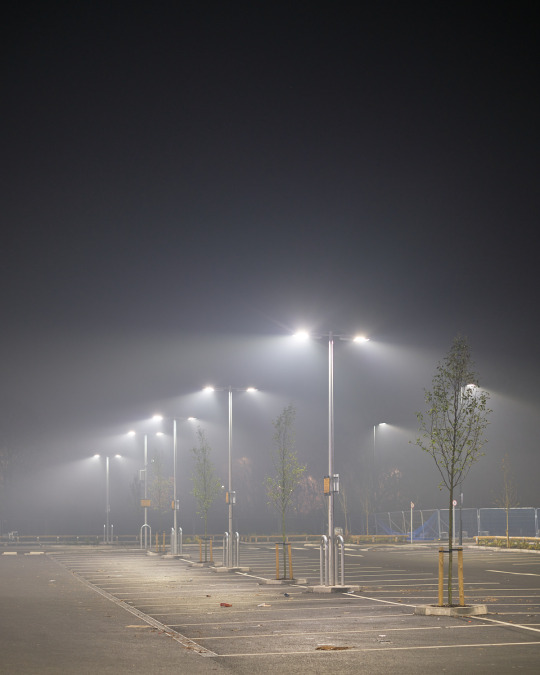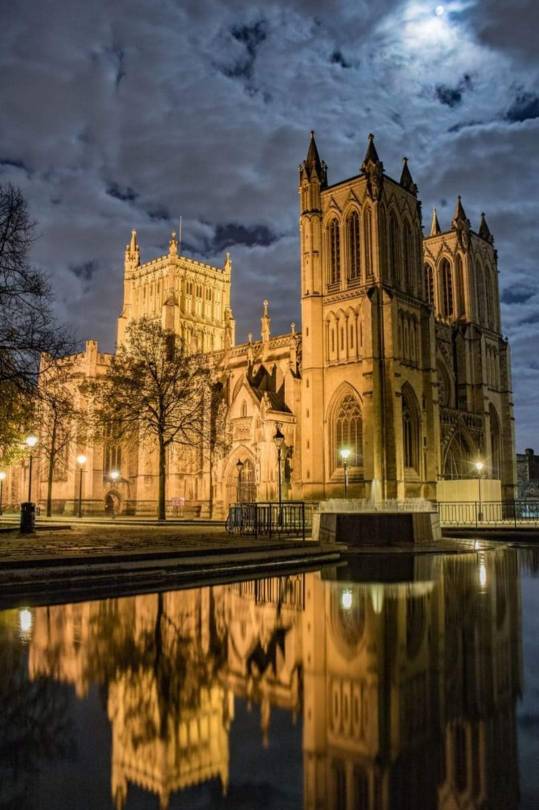#BRISTOL
Photo

Storming of Bristol
The storming of Bristol, a port then second only in importance to London, on 26 July 1643 by Royalist forces led by Prince Rupert (1619-1682) was a major coup against the Parliamentarians during the English Civil Wars (1642-1651). The Royalists were able to break through the long perimeter fortifications, which were manned by a defensive force spread too thinly. Taken in a day but with many casualties on both sides, Bristol became a vital Royalist centre until its fall to the Parliamentarians after the siege of 1645.
From Edgehill to Bristol
King Charles I of England (r. 1625-1649) considered himself an absolute monarch with absolute power and a divine right to rule, but his unwillingness to compromise with Parliament, particularly over money and religious reforms, led to a civil war from 1642 to 1651. Fought between the 'Roundheads' (Parliamentarians) and 'Cavaliers' (Royalists) in over 600 battles and sieges, the war was a long and bloody conflict. The northern and western parts of England largely remained loyal to the monarchy but the southeast, including London, was controlled by Parliament. The Parliamentarians also controlled the Royal Navy, a significant impediment to Charles receiving reinforcements from the Continent and Ireland. The king would need a port if the war dragged on, but if he could capture London in a decisive engagement, perhaps the war would be quickly over. Charles made his intent clear and raised the royal colours at Nottingham on 22 August 1642.
The first major engagement of the war had been the Battle of Edgehill in Warwickshire on 23 October 1642, which ended in a draw. Charles then delayed and captured Oxford before turning on London, where he was rebuffed by the presence of a 20,000-strong Parliamentarian army at Turnham Green. The king decided to fight another day and retreated to Oxford, which became the Royalist capital. A series of skirmishes and small-scale battles followed over the next year as neither side sought to commit all of their troops in a single field engagement. Rather, both sides concentrated on capturing what strategically valuable towns and cities they could. There were, too, half-hearted negotiations to bring peace through the winter and spring of 1643, but it seems that both sides were confident that they could press their advantage better on the battlefield when warmer weather arrived.
The indecisive nature of the war so far had not helped the Royalists in their predicament concerning sea power. In the summer of 1643, Prince Rupert, Count Palatine of the Rhine and Duke of Bavaria, Charles' nephew and commander of the Royal cavalry, was tasked with capturing Bristol, second only to London as the kingdom's most important port and an important regional military stronghold. Bristol was a major commercial centre, exporting such regional goods as cheese from the Wessex vales and importing many vital raw materials. It was a naval base and so could control the Irish Sea, and it was a major regional administrative centre. At the time, Bristol had a civilian population of around 15,000, making it the second-largest city in England after the capital.
Rupert, who was still only 23, had gained invaluable experience during the Thirty Years' War (1618-1648) in Central Europe. Rupert had been involved in the siege of Breda in 1637 and had fought well, if a little impetuously, in the Civil War so far, notably at Edgehill. Bristol was his next important target, but he would have to overcome the city's defences which he knew the value of, having himself advised the king (and been ignored) that Royalist cities should be heavily fortified.
Continue reading...
21 notes
·
View notes
Text

Very relaxed cat in the Bag Of Nails "Cat Pub", Bristol: 2019
1K notes
·
View notes
Text

Bristol, England
614 notes
·
View notes
Text

#fog#original photography#photography on tumblr#photographers on tumblr#bristol#night photography#atmospheric
336 notes
·
View notes
Text

Gradini a spirale al Bristol Palace Hotel - ITALIA
308 notes
·
View notes
Text
"On Monday this week [first week of December, 2023], workers in London’s financial centre were met with an unfamiliar sight – and sound. Around 100 chorists, some sporting bowler hats, had gathered at the headquarters of the City’s biggest fossil fuel-backing corporations to sing in protest.
The singers, encompassing a range of generations and vocal pitches, were part of the Climate Choir Movement, a network of choirs that officially launched in January 2023. While world leaders convened at the Cop28 climate summit in Dubai, they raised their voices in support of the Stop Ecocide campaign, which is working to criminalise the destruction of the environment.
The Climate Choir Movement’s co-founder Jo Flanagan first formed a choir in April 2022 with Extinction Rebellion to protest against HSBC’s fossil fuel investments at the bank’s AGM. Dressed smartly to blend in with shareholders, the singers rose up from their seats to disrupt the meeting with a rendition of the Abba classic "Money, Money, Money," the lyrics adapted to urge HSBC to finance renewable energy. [Note: A+ Song choice for this, tbh]
Flanagan had been inspired by a video of US activists singing as a flashmob in the middle of a conference speech to protest against greenwashing. “It made the hairs stand up on the back of my neck,” she recalls. “They walked out of the room in a very dignified way, still singing. I just thought, that’s the way I want to do it.”
Since then, the movement has grown from its first choir in Bristol to 10 choirs across the UK, with around 550 members at the time of writing. The local choirs organise their own rehearsals and protests, while all movement members can attend monthly sessions on Zoom where they learn new songs, to be performed at protests like the one in London.
For Ruth Routledge, who works as a singing for health practitioner and leads the Portsmouth choir in her spare time, taking part in this action was a “wonderful, uplifting” experience. “Singing and harmonising together is a very beautiful way to protest,” she says. “There’s something very gentle, very moving, and very powerful about it. It’s so vulnerable. There’s just a real naked, stripped back humanity that I think cuts through a lot of noise.”
The movement welcomes all new members, regardless of singing ability. Routledge was touched when some passersby – including “a couple of lads” – joined in with the songs.
She is eager for others to experience the sense of hope that singing together brings. “I feel very passionately about the state of the environment. I’m very concerned about my children’s futures, and I’m concerned about the whole world. It keeps me awake at night.
“Joining together means we’re not isolated, worrying that the world is on fire and no one’s going to do anything.”
For Flanagan, what sets the movement apart from other choirs that sing songs about nature is its targeted approach. “We organise very carefully choreographed, peaceful performance protests. We want to change hearts and minds.”
Seeing onlookers in tears illustrates to her what singing can achieve. “It reaches deep inside people in a way that other forms of protest can’t.”"
-via Positive.News, December 6, 2023
#climate news#climate protest#climate hope#hopepunk#singing#abba#bristol#london#uk#big bank billionaires#fossil fuels#climate change#climate crisis#direct action#protest#activism#climate activism#climate choir#ecocide#choir#choir stuff#protest songs#protest music#protest art#good news#hope
178 notes
·
View notes
Text

Redcliffe Parade.
Bristol, U.K.
January 2024.
IPhoneSE
116 notes
·
View notes
Text

Christmas Sandwiches are back! | Sandwich Sandwich
154 notes
·
View notes
Text


NIRVANA, 04.11.91 - Bierkeller, Bristol, United Kingdom 🇬🇧.
195 notes
·
View notes
Text

Alex Turner - Ashton Gate, Bristol
May 2023
📸: keirasconcerts_1234
80 notes
·
View notes
Text


Wilbur and his sweatband @ Bristol!
245 notes
·
View notes
Text

Chris Hoare. From the Seven Hills series. Bristol, England
178 notes
·
View notes
Photo

Inside Bristol’s reggae sound system culture
728 notes
·
View notes
Text

#new topographics#photography on tumblr#original photography#photographers on tumblr#bristol#night photography#atmospheric#fog#mist
599 notes
·
View notes
Text

Bristol Cathedral - ENGLAND
158 notes
·
View notes
Text

This Tudor-style stone cottage near Bristol was definitely built to last
#Blaise Hamlet#Henbury#Gloucestershire#Bristol#charming#slate roof#English villages#chimneys#stone cottages#UK
325 notes
·
View notes